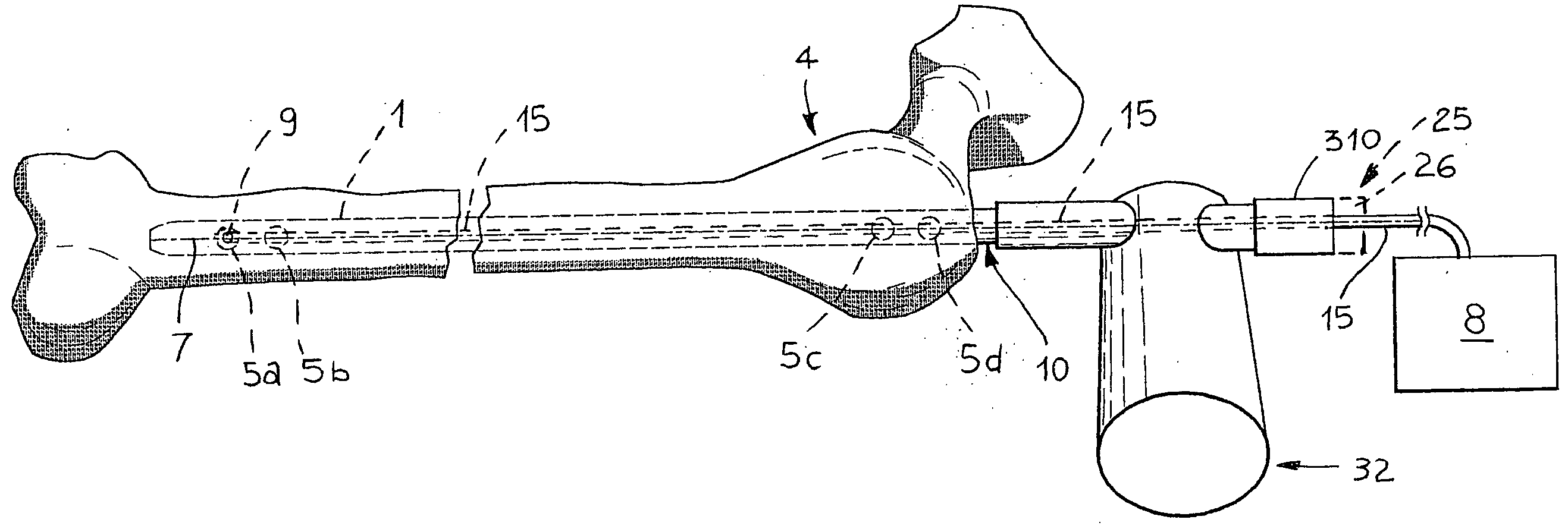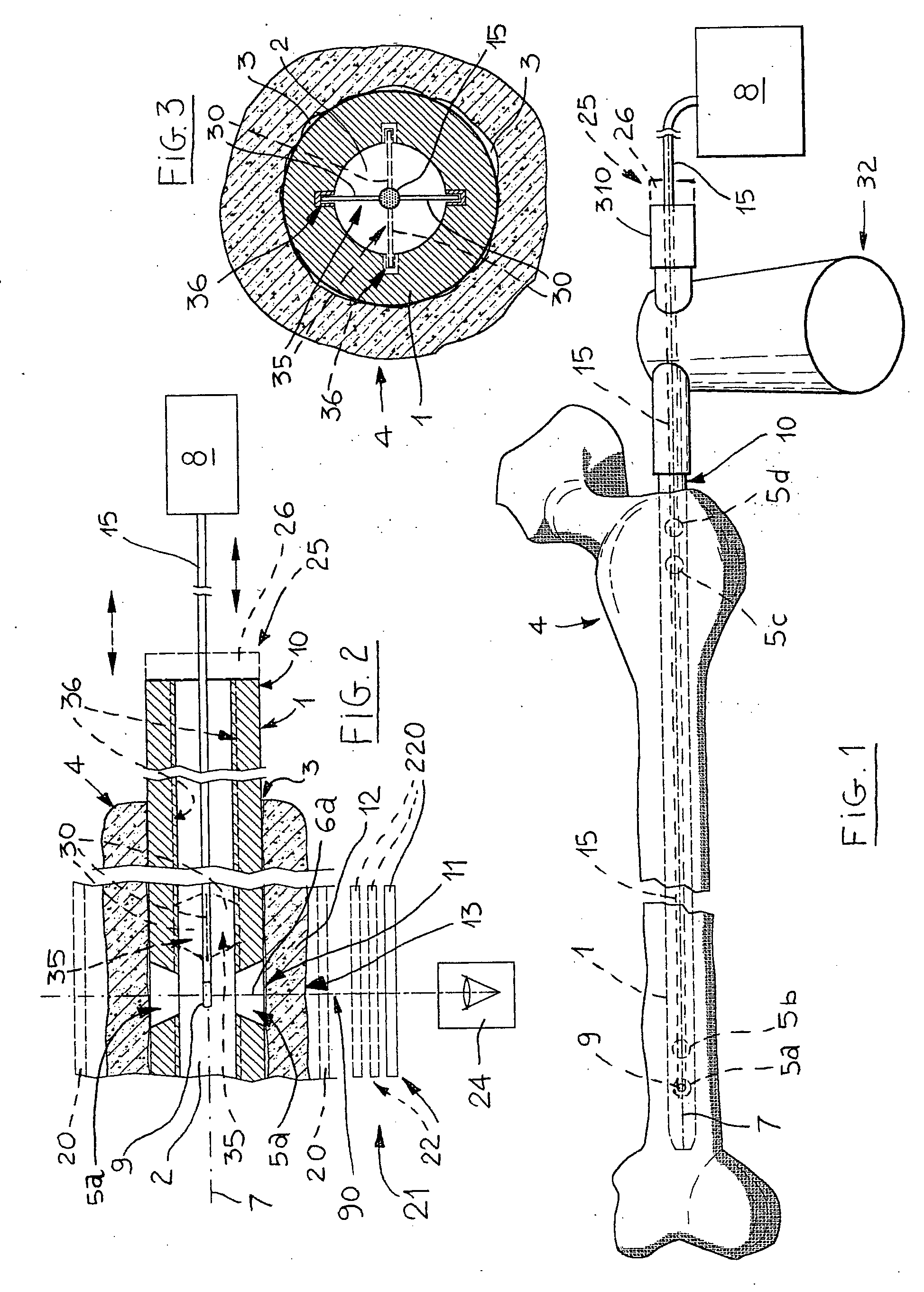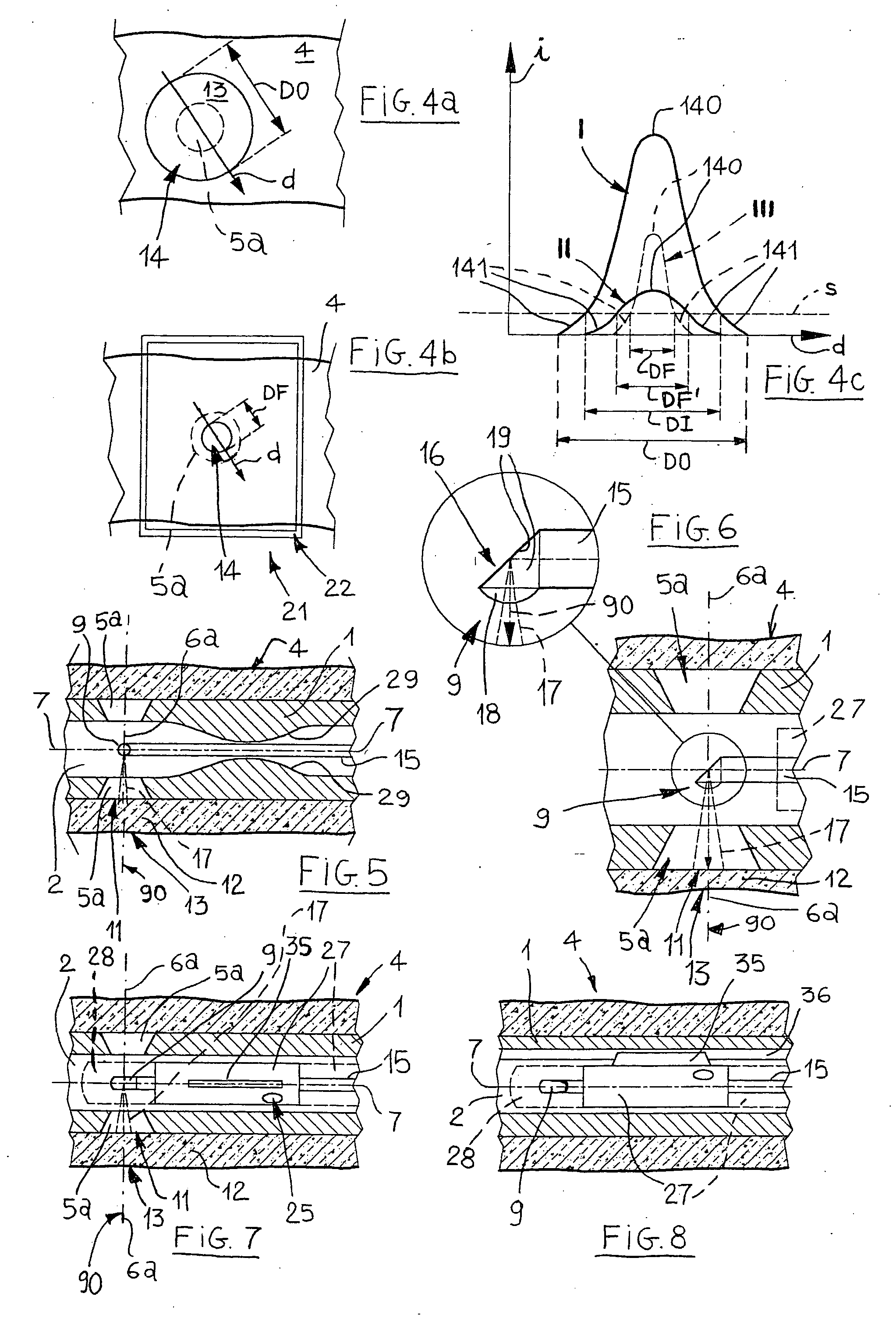Apparatus for the osteosynthesis of bone fractures by means of locked endomedullary nailing
a technology of osteosynthesis and nailing, which is applied in the field of apparatus for the osteosynthesis of bone fractures by means of locked endomedullary nailing, can solve the problems of compromising the stability of the nail, easy to make mistakes in aligning the drilling organ with the hole axis, and the delicate driving of the nail screw, etc., and achieve the effect of reducing bone fractures
- Summary
- Abstract
- Description
- Claims
- Application Information
AI Technical Summary
Benefits of technology
Problems solved by technology
Method used
Image
Examples
Embodiment Construction
[0047] With reference to the figures, an apparatus for the osteosynthesis of bone fractures by means of locked endomedullary nailing comprises a tubular nail 1, which defines a through coaxial internal channel 2. The nail 1, provided with transverse through holes 5a, 5b, 5c, 5d whose axis 6a, 6b, 6c, 6d intersects the axis 7 of the nail 1, can be inserted in a medullar channel 3 of a bone 4. The apparatus further comprises a device for locating the axis 6a of a predetermined hole 5a selected among said holes 5a, 5b, 5c, 5d, axis 6a along which the bone 4 is to be drilled to drive a corresponding screw (not shown herein) for locking the nail 1 on the bone 4.
[0048] The locating device comprises a source 8 of electromagnetic power, an emitter 9 of the electromagnetic power in the form of non ionising electromagnetic radiation and a line 15 for transmitting the electromagnetic power from the source 8 to the emitter 9.
[0049] The emitter 9 of the electromagnetic power in the form of non...
PUM
 Login to View More
Login to View More Abstract
Description
Claims
Application Information
 Login to View More
Login to View More - R&D
- Intellectual Property
- Life Sciences
- Materials
- Tech Scout
- Unparalleled Data Quality
- Higher Quality Content
- 60% Fewer Hallucinations
Browse by: Latest US Patents, China's latest patents, Technical Efficacy Thesaurus, Application Domain, Technology Topic, Popular Technical Reports.
© 2025 PatSnap. All rights reserved.Legal|Privacy policy|Modern Slavery Act Transparency Statement|Sitemap|About US| Contact US: help@patsnap.com



